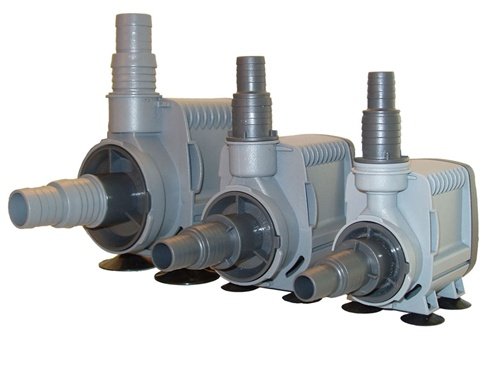1. Is an ultraviolet light a filter? Yes, as far as the definition of filter goes. A filter is a device that removes unwanted material from liquid, gas, light or sound. Ultraviolet light removes harmful bacteria such a pathogens from the water. In the case of algae or planktonic spores, the UV light would act more like a transformer than a filter. The UV light transforms the live algae spores into dead algae spores; it does not filter them out.
2. Do I need an ultraviolet light in my pond? Some ponds need a UV light and some do not. If you have a small pond with a few guppies or mosquito fish, and it is 50% covered with hyacinth, water lettuce, or lilies, and it is being aerated by a fountain or waterfall, the answer is: No! If you have many fish, few plants, and a cheap bio-filter, yes, a UV light would help a great deal. Most large ponds of 20,000 gallons or more tend to be more stable biologically and nature's hydrogen cycle keeps everything in check.
3. Does the UV light kill beneficial bacteria? You probably ask that question because some liner pond guy told you, or you read it on his website, that it does. Well, it does not. Beneficial bacteria are not floating around with the algae spores and pathogens. Aerobic and anaerobic bacteria, nitrobacter, and other bacteria are busy working and doing what they do. They live on the surface of things in the pond and in the rotting debris on the bottom of the pond, breaking down nitrites into nitrates and nitrogen, and breaking down ammonium into ammonia gas. Ultraviolet light does, however, kill the microscopic animals such as the rotifers and daphnia which each planktonic algae ("pea soup" algae). However, the UV light is taking care of those too, anyway.
4. What size should I get? Ultraviolet lights are sized by watts and the number of watts you need is determined by the size pond you have. You should move the entire volume of the pond through the filter and UV light at least every three hours, and ideally every 1.5 hours. If you have a 1000-gallon pond, you need a 1,500 gallon per hour pump. So you would need to get a UV light that is rated to handle 1,500 gallons per hour passing through it.
5. Which is the best UV light to purchase? Do your homework. Do not just compare the prices of the unit. Compare warranties and replacement bulb prices. Find out the flow rates and the amount of time that water is exposed to the UV light. What is the lamp life rating? Is it U.L. listed? Is it made of UV resistant materials? Is the power supply easy to disconnect? Is the lamp easy to remove? Does it have a lamp lens wiper so it can be cleaned without taking the fixture apart? Is the transformer located on the cord and not on the UV light body? Does it come with unions for easy disconnection from the system for maintenance? Buy a model that has the clear inspection cap so you can see at a glance if the lamp is working.
6. Where do I install the UV light in the system? The UV light should be installed after the bio-filter. This way, you are running filtered water through the fixture and it will stay clean longer.
7. How long should a bulb last? If you keep it clean (once a week), it should last for 18 months. This is all the more reason you should be willing to pay the extra to for the wiper model, because the labor would be too intensive if you had to take the fixture apart, remove the quartz lens, clean it, and then reinstall it every week. If you drop it or twist the cap on wrong and break it, it costs to for a new quartz lens. With the wiper model you simply pull a plunger several times and internal wiper acts as a squeegee to clean off the lens. If you do not clean the lens regularly, it will only last for a year, not 18 months. You can actually get two years out of your UV light if you turn it off during the winter months when the water is cold and the algae are dormant.
In conclusion I would like to suggest that you can never buy a UV light that is too big, but you can certainly purchase one that is too small!
Purchase Gourmet Rice Krispie Treats Respironics Bipap Quickly Shop For Vtech 6042










